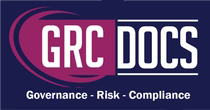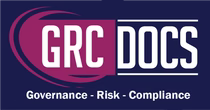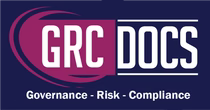NIST Policy And Procedure Manual: Complete Guide
Introduction
Navigating the complexities of risk management can be challenging, but it doesn't have to be. The National Institute of Standards and Technology (NIST) provides a comprehensive framework that can guide organizations in managing their cybersecurity risks effectively. This article will delve into the essentials of a NIST policy and procedure manual, offering a clear pathway to bolster your organization's security posture. By understanding the NIST guidelines, businesses can develop a strategic approach to cybersecurity, ensuring resilience against evolving threats.

Core Functions Of NIST framework
The NIST framework is built around five core functions:
-
Identify: Understand your environment to manage cybersecurity risk to systems, assets, data, and capabilities. This step involves cataloging all assets and understanding their value to the organization, which forms the foundation for building effective security measures.
-
Protect: Develop and implement safeguards to ensure delivery of critical infrastructure services. Protection involves implementing security controls such as firewalls, encryption, and access management systems to defend against potential threats.
-
Detect: Implement the appropriate actions to identify the occurrence of a cybersecurity event. Detection is crucial for early identification of breaches, employing tools like intrusion detection systems and continuous monitoring to spot anomalies.
-
Respond: Develop and implement the appropriate activities to take action regarding a detected cybersecurity incident. This function involves having a well-prepared incident response plan to contain and mitigate the effects of a security breach.
-
Recover: Maintain plans for resilience and to restore any capabilities or services that were impaired due to a cybersecurity incident. Recovery focuses on restoring systems and processes to normal operation post-incident, ensuring minimal disruption to business operations.
These functions provide a strategic view of the lifecycle of an organization's management of cybersecurity risk. They enable organizations to align their cybersecurity activities with business objectives, ensuring that security measures support business operations rather than hinder them.
Creating A NIST Policy And Procedure Manual
A NIST policy and procedure manual is essential for translating the framework's guidelines into actionable steps. Here's how you can develop one. This manual serves as a blueprint for implementing NIST's recommendations, helping organizations to systematically address their cybersecurity challenges.
Step 1: Conduct a Risk Assessment
Before drafting your manual, conduct a thorough risk assessment. This involves identifying potential threats, vulnerabilities, and the impact these could have on your organization. Use this information to prioritize the risks that need immediate attention. A comprehensive risk assessment provides a clear picture of your organization's current security posture and highlights areas that require improvement.
Engaging stakeholders from different departments can enrich the risk assessment process, ensuring that all potential risks are considered. Additionally, using specialized software tools for risk assessment can enhance accuracy and efficiency, providing data-driven insights that inform policy development.
Step 2: Define Policies and Procedures
Based on your risk assessment, define clear policies and procedures that align with the NIST framework. This could include access control policies, data protection measures, and incident response plans. Ensure these are tailored to your organization's specific needs and risk profile. Customizing these policies ensures that they are relevant and effective in addressing your unique cybersecurity challenges.
Policies should be designed to be flexible yet comprehensive, allowing for adjustments as new threats emerge. Collaboration with legal and compliance teams can ensure that policies also meet regulatory requirements, safeguarding the organization from potential legal issues.
Step 3: Implement Controls
Implement the necessary controls to mitigate identified risks. These controls should cover all areas of cybersecurity, including technical, administrative, and physical measures. Document these controls in your manual, ensuring they are accessible and understandable to all relevant stakeholders. Controls are the tangible actions that enforce your cybersecurity policies, translating strategy into practice.
Regular audits and assessments of these controls are vital to ensure they remain effective. Engaging third-party experts for independent evaluations can provide an objective view of your security posture, helping to identify gaps and areas for improvement.
Step 4: Train Your Team
Training is crucial to the success of your NIST policy and procedure manual. Ensure that all employees understand the policies and procedures, as well as their role in maintaining cybersecurity. Regular training sessions and updates are essential to keep everyone informed of any changes or new threats. Continuous education fosters a security-conscious culture within the organization, empowering employees to act as the first line of defense against cyber threats.
Incorporating interactive elements such as simulations and drills can enhance the effectiveness of training programs. These practical exercises allow employees to experience real-world scenarios, improving their ability to respond effectively to actual incidents.
Step 5: Monitor and Review
Cybersecurity is a dynamic field, and threats are constantly evolving. Regularly monitor your systems for any signs of security breaches and review your policies and procedures to ensure they remain effective. Make adjustments as necessary to address new risks or changes in your organization's operations. Continuous monitoring allows for real-time threat detection, enabling swift response and mitigation of potential breaches.
Implementing automated monitoring tools can enhance efficiency, providing continuous oversight without requiring constant manual intervention. Regular reviews and updates of the policy manual ensure that it evolves alongside the organization's needs and the cybersecurity landscape.
Benefits Of A NIST Policy And Procedure Manual
Implementing a NIST policy and procedure manual offers several advantages:
-
Improved Risk Management: A structured approach helps in identifying and managing risks efficiently. By systematically addressing risks, organizations can minimize potential damage from cyber threats.
-
Enhanced Security Posture: By following best practices, organizations can significantly strengthen their cybersecurity defenses. A robust security framework deters potential attackers and reduces the likelihood of successful breaches.
-
Regulatory Compliance: Many industries require adherence to specific cybersecurity standards. A NIST-based manual can help meet these requirements. Compliance not only avoids legal penalties but also enhances the organization's reputation and trustworthiness.
-
Increased Stakeholder Confidence: Demonstrating a commitment to cybersecurity can enhance trust among customers, partners, and stakeholders. A well-implemented security strategy reassures stakeholders that their data is handled responsibly and securely.
Moreover, a NIST-aligned manual can facilitate better communication and coordination among departments, leading to more cohesive and effective security strategies. It also serves as a foundation for continuous improvement, encouraging organizations to refine and enhance their cybersecurity measures over time.
Challenges In Implementing NIST Guidelines
While the benefits are clear, implementing a NIST policy and procedure manual can present challenges:
-
Resource Intensive: Developing and maintaining a comprehensive manual requires significant time and resources. Organizations may need to invest in new technologies and personnel to fully implement NIST guidelines.
-
Complexity: The breadth of the NIST framework can be overwhelming, especially for smaller organizations with limited cybersecurity expertise. Smaller firms may struggle to allocate the necessary resources or may lack the technical knowledge to implement the guidelines effectively.
-
Continuous Updating: The dynamic nature of cybersecurity threats means that policies and procedures must be regularly reviewed and updated, requiring ongoing attention and effort. Keeping abreast of the latest threats and technologies is crucial for maintaining an effective security posture.
Despite these challenges, organizations can overcome them by adopting a phased approach to implementation, focusing on high-priority areas first. Partnering with cybersecurity experts can also provide valuable guidance and support, helping organizations navigate the complexities of NIST implementation.
Conclusion
The NIST policy and procedure manual is a powerful tool for managing cybersecurity risks. By following the framework's guidelines, organizations can build a robust security posture that protects them against a wide range of threats. Although implementation requires effort, the resulting benefits of improved security, compliance, and stakeholder trust make it a worthwhile investment. By understanding and applying the NIST framework, your organization can navigate the complexities of cybersecurity risk management with confidence and clarity. Embracing this framework not only enhances security but also aligns cybersecurity efforts with business objectives, supporting sustainable growth and innovation in the digital age.






